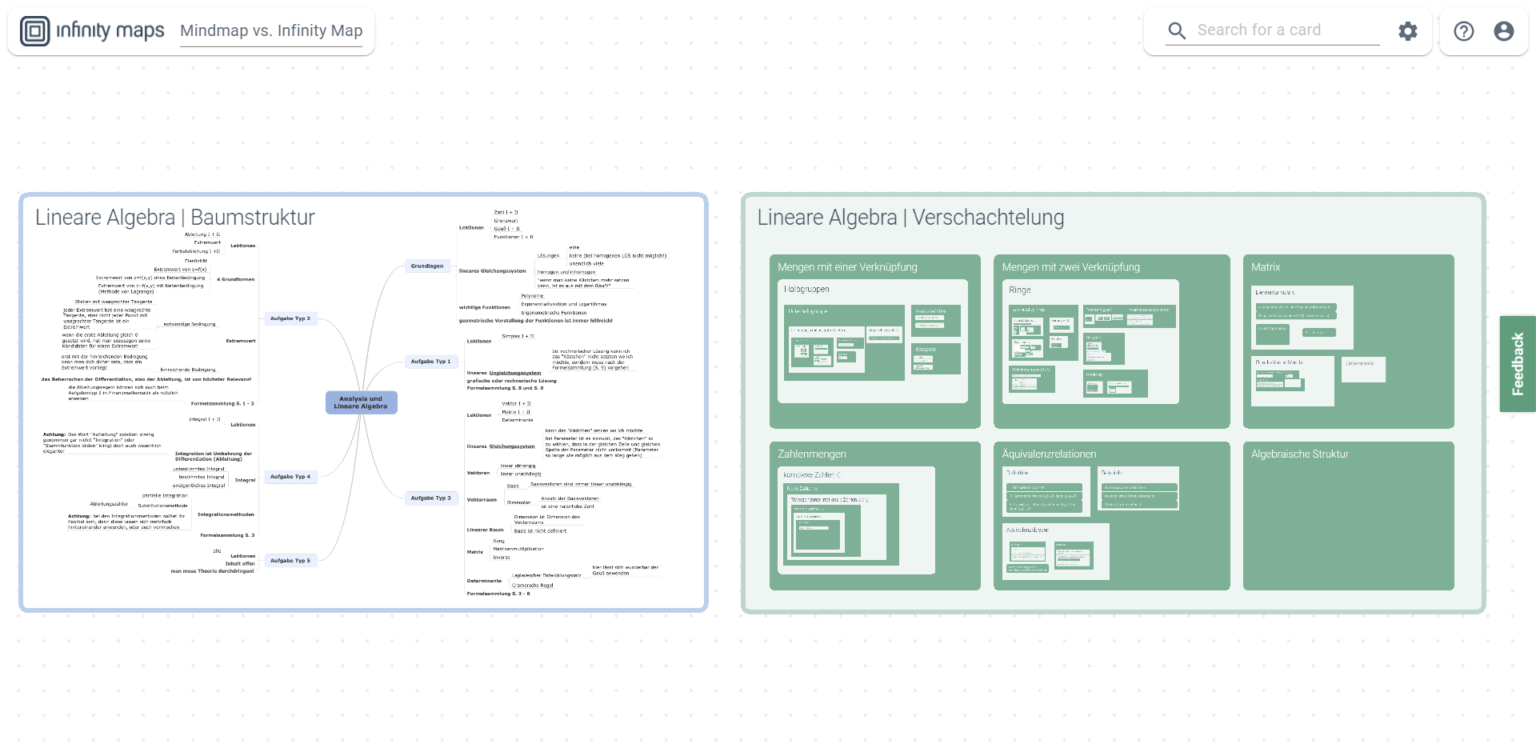Mind Map Hype? Pros & Cons

Mindmapping is one of the most common creativity methods and is often used in private and professional environments for exactly this purpose: Developing ideas and getting new food for thought through visualization. However, mindmaps also bear some disadvantages. The iMapping method and its dedicated software Infinity Maps integrate the advantages of mind mapping while mitigating its disadvantages.
Mind map: method and tools
Mindmapping is a method for visually representing ideas. It was developed by Tony Buzan in the 1970s and is based on drawing ideas in a tree-like structure branching from the inside out. Mind maps have proven especially useful for brainstorming, as they allow ideas to be noted down graphically both quickly and easily. First, you write or draw the core theme in the center and proceed to draw outward branches with the first ideas that come to mind. If more ideas come to mind for an already captured idea, you add them to the main branches as sub-branches.
While mind mapping was originally invented for paper and crayons, today there are a number of well-developed mind mapping tools. Using software programs for mind maps allows you to rearrange the maps as you create them, for example to rearrange the topic or to put more details in one place than originally expected.
Limitations of mind maps
Convenient as they are in many cases, mindmaps have two key drawbacks that limit them for some use cases. On the one hand, mind mapping does not allow cross-connections: While the tree structure allows for a simple hierarchical arrangement of content, cross-connections, which are often necessary, are difficult to map in mind maps without quickly appearing chaotic. On the other hand, no extensive, really large maps are possible: Those who use mind maps intensively, especially with software, quickly have to deal with sizes for which the method is not designed. With numerous ramifications, the pleasant nature of the tree-like overview is usually lost.
If you do not have a problem with both, you are well served with the common mind map tools. However, those who like to create large maps or deal with interconnected issues should consider switching to an alternative.
Infinity Maps vs. mind map
Infinity Maps is based on the iMapping method, which is related to mind mapping. Both mapping methods share at their core the visual representation of information. However, the equally hierarchical visualization of the mind map and an Infinity Map is achieved differently: The basic principle of Infinity Maps are Cards, which contain the content, and which are nested within each other. Unlike branching, this novel concept provides an overview at all times, no matter how interconnected or large the map is to become. Cross-connections are represented by arrows between the Cards. Since there are no branches, the arrows do not visually compete with them. Due to the nesting principle, Infinity Maps can grow to any size. The zoom function allows you to work fluidly in depth, opening up more and more space for further details.


Kommentare